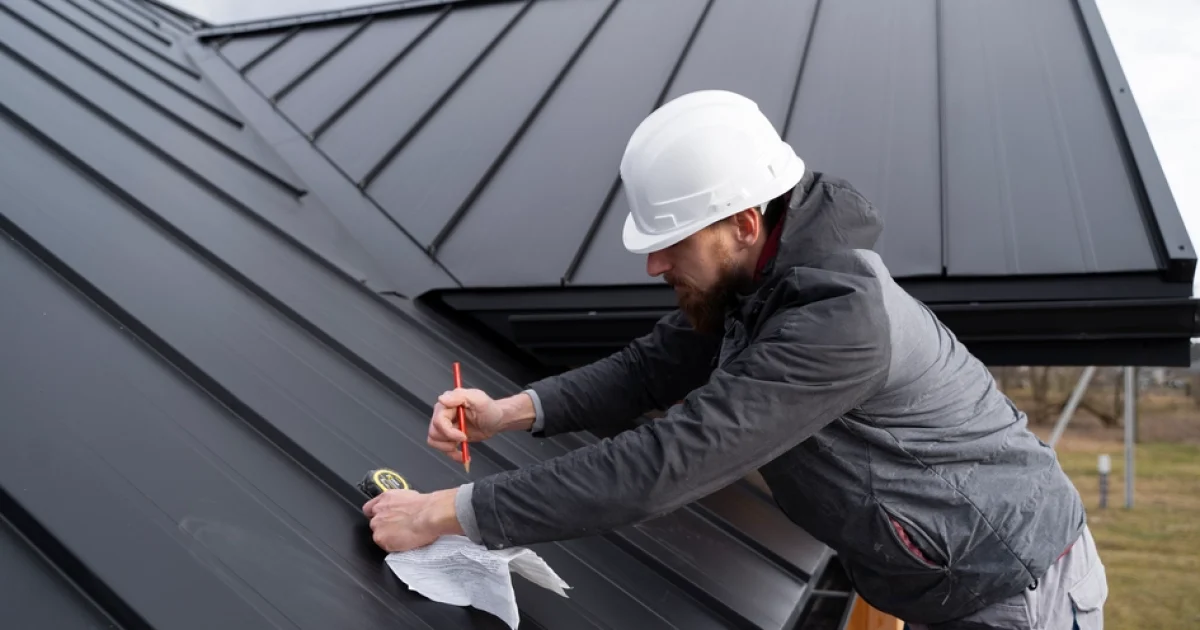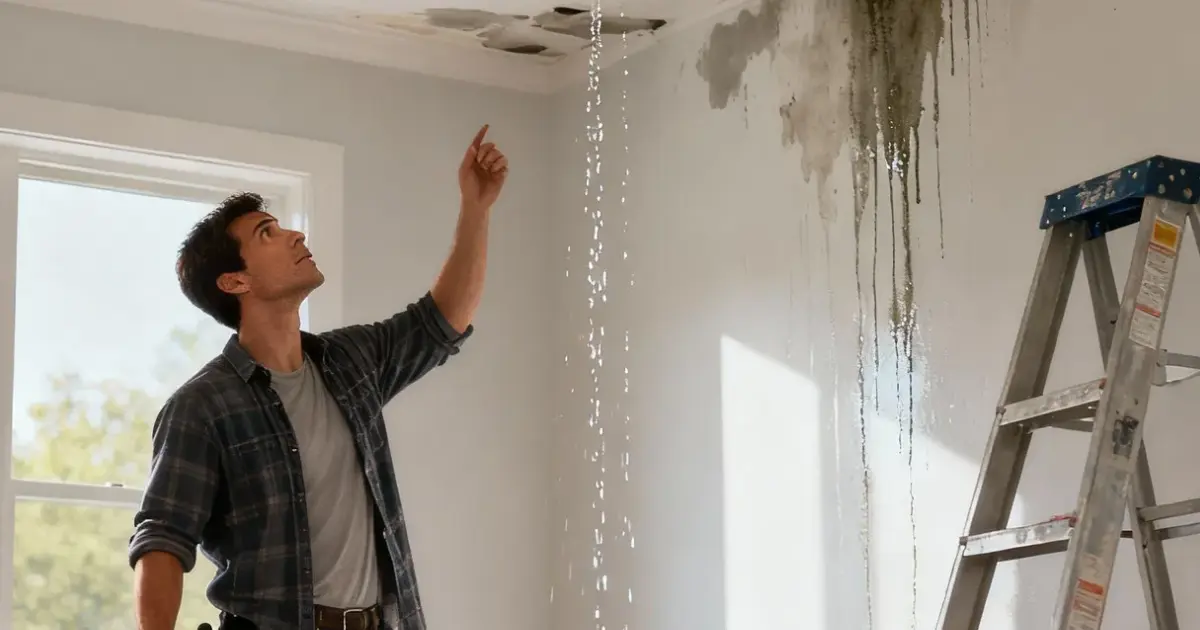As summer approaches, ensuring your roof is in top condition becomes essential for every homeowner. A comprehensive pre-summer roof inspection can identify potential issues before the intense summer heat and storms arrive, saving you time and money on costly repairs. This guide provides a detailed roof inspection checklist to help you maintain your roof’s integrity and protect your home throughout the summer season.
Table of Contents
Why is a Pre-Summer Roof Inspection Important for Homeowners?
A proactive roof inspection before summer is one of the most crucial maintenance tasks homeowners should undertake. Your roof remains your home’s first line of defense against the elements, and ensuring its structural integrity before the summer months is essential. Most homeowners don’t realize that neglecting regular roof inspections can lead to minor issues escalating into major structural problems that compromise the entire roof system. By conducting a thorough pre-summer assessment, you identify potential vulnerabilities before they worsen under intense summer conditions.
How Summer Weather Can Impact Your Roof
Summer weather patterns present unique challenges to your roof structure. The relentless summer sun can cause shingles to crack, warp, or lose granules as UV radiation degrades roofing materials over time. High temperatures can accelerate the aging process of your roof, especially for older roofing materials that are already showing signs of wear. Additionally, summer storms bring heavy rainfall that can penetrate vulnerable areas, creating leaks that might not be immediately visible from inside your home.
The combination of heat, UV exposure, and sudden summer storms can stress even well-maintained roofs, making pre-summer inspections particularly important for identifying weak points before they fail during extreme weather events.
Benefits of Thorough Roof Maintenance Before Summer
Conducting a thorough roof inspection before summer offers numerous benefits beyond just identifying potential problems. First, proactive roof maintenance significantly extends your roof’s lifespan, protecting your investment in your home. Early detection of issues like loose shingles, minor cracks, or deteriorating flashing allows for targeted repairs rather than complete replacement, saving substantial money in the long run.
Proper roof maintenance also ensures optimal energy efficiency during the hottest months, as a well-maintained roof with proper ventilation helps regulate indoor temperatures and reduces cooling costs. Perhaps most importantly, addressing roof vulnerabilities before summer storms arrive provides peace of mind that your home remains protected from water damage that could affect interior spaces, belongings, and even structural elements.
How Often Should You Conduct Roof Inspections?
Most roofing experts recommend conducting comprehensive roof inspections at least twice yearly—once in spring before summer and again in fall before winter. However, this frequency should increase if your home experiences severe weather events or if your roof is older than 15 years. After major storms with high winds or hail, it’s advisable to perform additional inspections to check for new damage regardless of your regular schedule.
Newer roofs with high-quality materials might require less frequent professional inspections, but homeowners should still visually monitor their roof’s condition throughout the year.
Remember that conducting regular inspections creates a maintenance history that helps track your roof’s degradation over time, making it easier to predict when replacement might be necessary rather than being surprised by sudden failure during summer heat and storms.
What Should Be Included in a Comprehensive Roof Inspection Checklist?
A comprehensive roof inspection checklist serves as your roadmap to ensure no critical elements are overlooked. When developing your checklist, include sections for structural assessment, roofing material evaluation, attic examination, and gutter system inspection. Your roof inspection checklist should be tailored to your specific roofing type, whether it’s asphalt shingles, metal, tile, or another material, as each has unique vulnerabilities.
Documenting both the exterior and interior signs of potential roof issues provides a more complete picture of your roof’s condition. Don’t hesitate to adapt professional inspection templates to better suit your home’s specific needs and the prevalent weather patterns in your region.
Essential Structural Elements to Inspect
To ensure a durable roof, conduct a thorough pre-summer roof inspection by examining the structural elements for visible sagging or uneven areas, which could signify underlying issues. Inspect the roof’s plane for deviations and check the attic for signs of water damage, such as dark stains or soft wood. Pay special attention to junctions between different roof sections, as they are vulnerable to leaks.
Use a flashlight to look for light penetration that indicates gaps, and assess load-bearing walls for stress signs. Don’t hesitate to contact a professional if you identify potential damage, as proactive roof maintenance can save time and prevent costly repairs during the summer months.
Roofing Material Assessment Points
A thorough pre-summer roof inspection checklist is essential for homeowners to ensure a durable roof. Inspect roofing materials, focusing on shingles for signs of wear like curling, cracking, or missing pieces that compromise waterproofing. Look for granule loss in gutters or downspouts, indicating deterioration from UV exposure.
For metal roofs, check for rust and loose fasteners that could lead to water penetration during summer storms. Tile roofs should be examined for cracked or broken tiles.
Pay special attention to roof penetrations such as vents and skylights, which are common leak sources. Document areas exposed to direct summer sun, as they may require proactive maintenance to prevent costly repairs and ensure your roof remains structurally sound throughout the summer months.
Documentation and Record-Keeping Tips
To ensure a durable roof, homeowners should conduct thorough roof inspections using a pre-summer roof inspection checklist that focuses on visible damage, such as missing shingles, cracks, or rust, and pay special attention to the roof surface, gutters, and downspouts to prevent water pooling and drainage issues.
Regular maintenance, including inspecting for granule loss and debris buildup, is crucial to identify potential issues before the summer heat and storms escalate into costly repairs.
Documenting each inspection with photographs and notes about roofing materials, repairs, and weather patterns will help track the roof’s condition over time, providing peace of mind and potentially increasing property value for future homeowners.
How to Perform a DIY Roof Inspection Before Summer
DIY roof inspections can be highly effective when performed safely and thoroughly to ensure your roof remains durable. Begin your pre-summer roof inspection checklist by conducting an initial assessment from ground level using binoculars to spot obvious issues like missing shingles, visible damage, or sagging sections.
Choose a clear, dry day for a closer inspection to ensure safety and visibility on the rooftop. Follow a systematic pattern to inspect the roof surface, paying special attention to potential issues such as rust, cracks, or debris around the perimeter and in the gutters and downspouts, which could lead to water pooling or drainage blockage. Document findings with photographs and detailed notes about the condition of different areas and components of your roof.
After examining the exterior, inspect your attic for signs of water damage, looking specifically for water stains or mold that indicate roof leaks. Regular maintenance and proactive inspections can save time and prevent costly repairs, but don’t hesitate to call professionals if you discover significant issues or if accessing your roof safely is challenging.
Safe Inspection Techniques for Homeowners
Safety must be your primary concern when conducting DIY roof inspections. Always use a sturdy extension ladder with stabilizers that extends at least three feet above the roof edge, ensuring it’s placed on level, solid ground. Consider using a roof safety harness system if you need to walk on the roof surface, especially for steep-pitched roofs. Wear rubber-soled shoes with good traction to prevent slipping while on the rooftop. Avoid roof inspections during wet, windy, or extremely hot conditions that increase the risk of accidents.
If possible, have a helper present to stabilize the ladder and assist if needed. For multi-story homes or those with complex roof structures, consider using a drone with a camera to capture detailed images rather than risking physical access. Pay attention to power lines near your roof and maintain a safe distance at all times. Remember that no inspection is worth risking personal injury – when in doubt about safety, conduct as much of your inspection from the ground or through attic access, and leave the more dangerous aspects to professional roofers.
Tools Needed for a Thorough DIY Roof Inspection
Assembling the right tools before beginning your DIY roof inspection ensures you can thoroughly assess your roof’s condition and identify potential issues. A sturdy ladder provides secure access to the roof edge, while a bright flashlight is essential for examining dark areas, particularly in the attic where signs of water damage often first become visible.
A moisture meter can detect dampness that might indicate water penetration, and a clipboard with your roof inspection checklist ensures you cover all aspects of the inspection. Safety equipment protects you during the process, and small tools like a screwdriver can help test for soft spots or probe suspicious areas. Don’t hesitate to contact a professional if you identify any visible damage or potential summer issues that could lead to costly repairs.
When to Contact a Professional Instead
While DIY inspections provide valuable insights, certain situations warrant professional intervention for your roof to ensure your roof remains durable. Don’t hesitate to call a professional roofer if you discover significant structural issues such as sagging sections or multiple soft spots that may indicate severe water damage.
If your inspection reveals widespread problems like extensive shingle damage, numerous cracks, or large areas of granule loss, professional assessment is essential to identify potential issues. Contact an expert immediately if you find active leaks or extensive water stains, as these require prompt attention to prevent further damage. Homes in areas prone to severe weather should receive professional inspections following major storms, as storm damage can lead to costly repairs if not addressed proactively.
Remember that while professional inspections cost money upfront, they can save substantial amounts by identifying problems before they escalate into major structural issues requiring costly repairs.
What Roof Maintenance Issues Should You Look for During an Inspection?
During your pre-summer roof inspection, ensure your roof remains durable by identifying potential issues that could escalate under summer conditions, such as debris accumulation in roof valleys and around protrusions, which can trap moisture and lead to water damage.
- Pay special attention to moss or algae growth, signs of wear, and previous repairs that may have failed.
- Conduct a thorough inspection of the roof surface, especially at junctions where roofing planes meet.
- Examine the roof coating for any deterioration.
- Check the roof edge and fascia boards for rot or damage that could compromise the roof structure during summer storms.
- Address small issues that can collectively impact your roof’s ability to withstand summer heat and rainfall.
Identifying Shingle Damage, Cracks, and Granule Loss
To ensure a durable roof, conduct a thorough pre-summer roof inspection checklist focusing on shingle damage, which is a common vulnerability that can escalate during the summer months.
- Examine shingles for curling edges, cracks, and granule loss, as these issues can lead to water penetration and costly repairs.
- Pay special attention to loose or missing shingles that summer winds may dislodge, and inspect for blistering and color inconsistencies that indicate UV damage.
- Regular maintenance and immediate attention to visible damage, such as sagging or soft spots, can protect your home from potential water damage caused by summer storms.
- Don’t hesitate to contact a professional for a consultation if you identify any underlying issues during your DIY inspections, ensuring your roof remains structurally sound throughout the summer season.
Checking for Leaks and Water Damage Signs
To ensure a durable roof, conduct a thorough pre-summer roof inspection by examining your attic for signs of water damage, such as water stains, mold growth, or damp insulation, which can indicate ongoing leaks. Use a sturdy ladder to inspect the roof surface for missing shingles, cracks, or granule loss, and pay special attention to areas around chimneys, skylights, and vents where flashings may develop leaks.
Check for debris in gutters and downspouts to prevent blockage that could lead to water pooling, and look for soft spots or sagging areas that could signify underlying issues.
Regular maintenance and proactive inspections before the summer season can help identify potential damage and save time on costly repairs, ensuring your roof remains structurally sound against summer heat and storms.
Assessing Gutter Systems and Downspouts for Blockage
Your gutter system plays a crucial role in directing water away from your home, making its inspection an essential part of pre-summer roof maintenance. Thoroughly check gutters for debris accumulation including leaves, twigs, and granules from shingles that could cause blockage during summer storms.
Ensure all gutter sections remain properly attached to the fascia boards, looking for loose hangers or sagging sections that might fail under the weight of rainfall.
Confirm that gutters maintain a slight downward slope toward downspouts to facilitate proper drainage and inspect all seams and connections for leaks, rust, or separation that could allow water to escape near the foundation, as well as ensuring downspouts direct water at least 3-5 feet away from your home’s foundation to prevent water damage to the structure.
How to Address Roof Ventilation During Pre-Summer Inspections?
Roof ventilation assessment should be a priority during pre-summer inspections as proper airflow becomes critical during hot weather. Examine both intake vents (typically at the eaves) and exhaust vents (near the ridge) to ensure they’re free from obstruction and functioning properly. Calculate your attic’s ventilation requirements based on square footage to confirm you have sufficient ventilation for summer conditions.
Check that insulation isn’t blocking soffit vents, as this common problem restricts essential air intake. Inspect vent screens for damage that might allow pests entry while reducing effective ventilation. Assess the balance between intake and exhaust ventilation, as an imbalance can reduce overall system effectiveness.
Consider upgrading ventilation if your assessment reveals inadequate airflow for the approaching summer season. Proper ventilation not only protects your roof structure but also contributes significantly to your home’s energy efficiency during the hottest months.
Signs of Poor Roof Ventilation
Recognizing signs of poor ventilation is crucial for maintaining a durable roof and ensuring its longevity. Inadequate ventilation can lead to a buildup of heat and moisture in the attic, which can cause various issues such as mold growth, wood rot, and damage to roofing materials.
Homeowners should be vigilant for indicators like excessive heat in the attic, condensation on windows, or a musty odor, all of which suggest that air is not circulating properly. Additionally, if you notice peeling paint or warped shingles, these could be signs that poor ventilation is affecting your roof’s integrity.
By identifying these warning signs early, homeowners can take effective steps to address ventilation issues, ultimately contributing to a more durable roof and preventing costly repairs down the line.
Roof Inspection Checklist Conclusion
Regular roof inspections are crucial for maintaining the integrity of your home. Taking the time to address any issues now can save you from costly repairs in the future. For a comprehensive roof inspection, consider Benchmark Roof Reports. Their expert team is dedicated to providing thorough assessments and ensuring your roof is ready for the summer ahead.
FAQs
What should I include in my pre-summer roof inspection checklist?
Your pre-summer roof inspection checklist should include checking for visible damage, inspecting roofing materials for granule loss, and ensuring proper drainage around gutters and downspouts to prevent water pooling.
How can I identify potential issues during a roof inspection?
During a roof inspection, pay special attention to signs of wear such as missing shingles, cracks, and rust, as these could signify underlying issues that may lead to costly repairs if not addressed promptly.
Why is it important to conduct regular roof maintenance before the summer season?
Conducting regular roof maintenance before the summer season helps ensure your roof remains durable against heat and storms, providing peace of mind and preventing potential damage from water leaks and structural issues.





